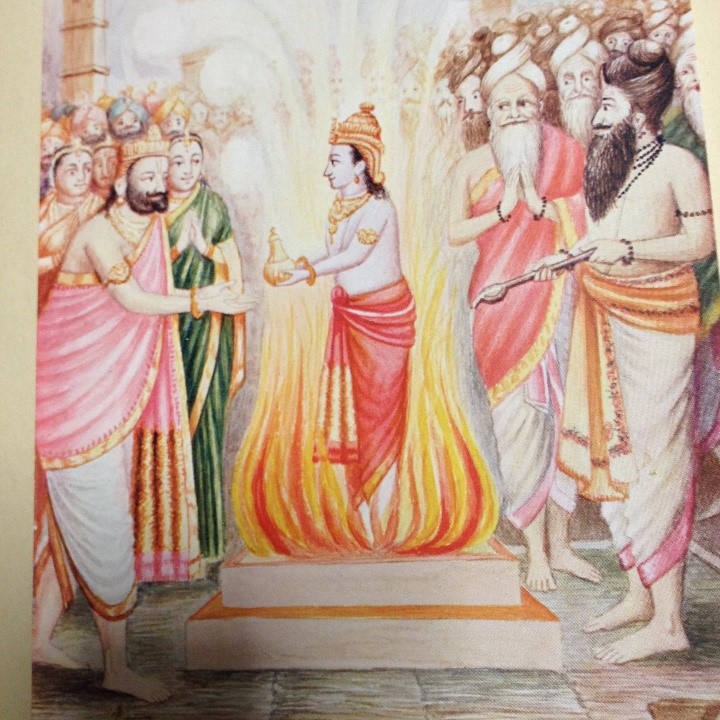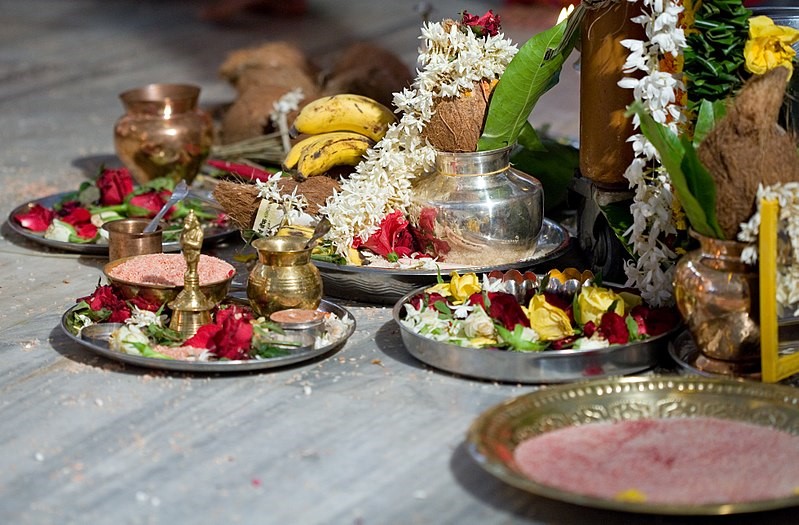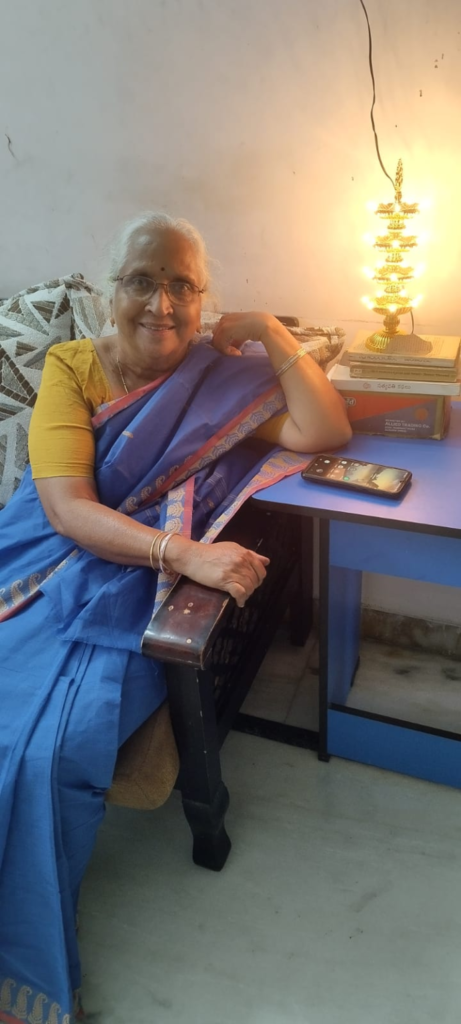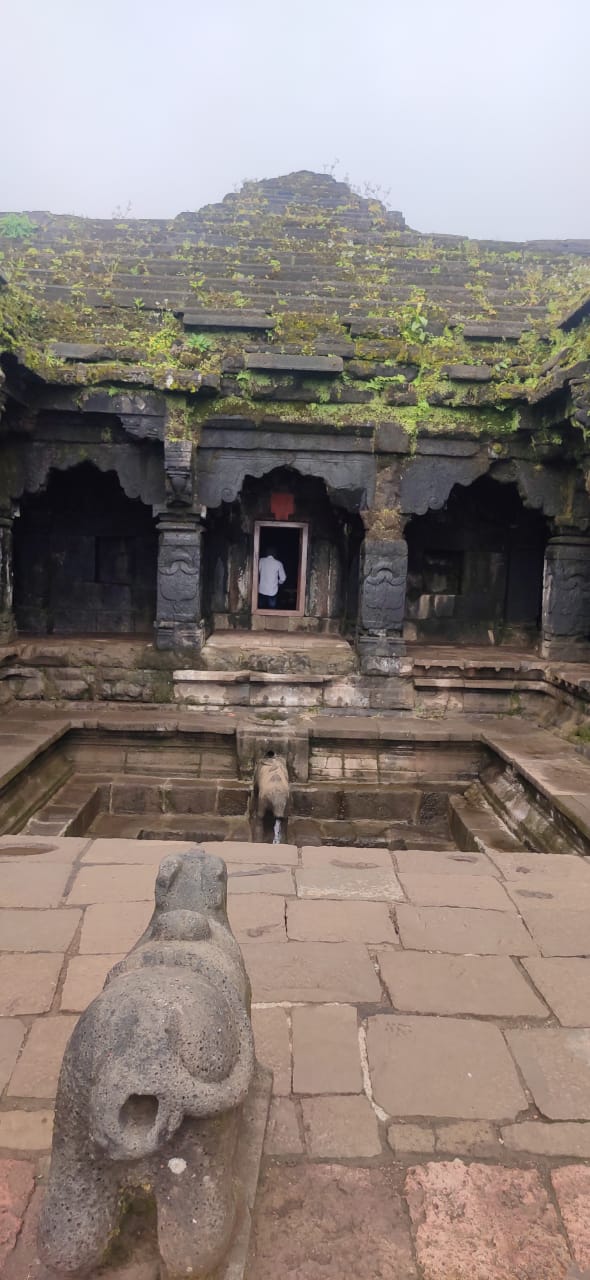Is Hinduism Sanathan- II: Vedas to Puranas, Yagna to Puja
You can read the previous article in the same series here.
Dr Uma Shankari*
Hinduism has changed a great deal in the several centuries from the Vedic period (1500-500 BC) to now; and it is still evolving into new shapes in different parts of the country. And that should come as no surprise, for, any religion, if it wants to survive and thrive, it has to adapt to changing times and rework its principles and activities – its beliefs and worship. That is how it can survive. If it does not adapt itself to changing times, it will become a dead religion, a religion of the past. (There are several such dead religions in the history of the world-e.g. Canaanite religion, Minoan religion, Mithraism, Tengriism, Ashurism)
During the Vedic period (circa 1500 BC-500 BC) worship was in the mode of yagna, a fire ritual. Gods and goddesses were offered food and drink through the fire, accompanied by hymns of praise and requests for the protection and wellbeing of the sacrificers. Sacrifice of animals and offering of intoxicant liquor was common. In course of time, by the time the Smritis and the Puranas were composed (500 BC – 500 AD), puja, a mode of worship through offerings of flowers, fruits and vegetarian foods became the main mode of worship, although yagna or the fire-sacrifice, continued to be performed in smaller scale.

https://commons.wikimedia.org/wiki/File:Sacrifices_Yield_Boon_Giving_Pudding.jpg
How and when exactly in history the Vedic rite of yagna – worshipping the gods through the fire ritual with offerings of meat, cooked cereal and liquor got transformed into puja -worshipping with flowers and fruits is not clear. Probably it gained currency after the advent of Upanishads, Buddhism and Jainism, and through the exchange of ideas from one another. These post- Vedic schools of philosophy questioned animal sacrifices done in the yagnas and advocated a non-violent, inward-looking spirituality, and an exploration into connection between body, mind and the universe.
Here it must be remembered that around 2000 years passed between the Vedic Hinduism and Puranic Hinduism. Many changes happened during this time. The most important was the emergence and spread of renunciatory (sramana) religions like Jainism and Buddhism (600 BC to 300 AD) and the exchange between them and the Vedic religion. Vedic Hinduism emphasized the comforts and pleasures of this life and the life after, these benefits brewing from the rituals of fire sacrifice with offerings of meat, milk, cooked grain and drink. The sramana religions saw the world as one of suffering, identified desire as the root of suffering and advocated austerities and renunciation as the way to freedom from suffering. They also stressed non-violence in both worship and life, and denounced animal sacrifices in fire rituals. The exchange of ideas among these religions led to adoption of non-violence and vegetarianism, especially among the upper castes and classes.
Sramana religions, particularly Jainism and Buddhism, commanded a large following in the laity and the royalty who favored them by generous support to build structures- chaityas and the cave dwellings- for the residence of monks. However, by the Smriti-Puranic period the Varna-Jati social structure led by the Brahmin-Kshatriya alliance re-asserted itself against the sramana religions. This it did mostly by absorbing certain elements of the sramana religions, and partly by driving them away by persecution. Non-violence as well as a self-controlled life with renunciation of desire and austere way of life got accepted as higher values of life. Around the same time in history, temple worship began to take the place of the big public yagnas; temples also started replacing the chaityas and cave dwellings of the Jains and Buddhists.
Today although yagna continues to be performed at both at homes and in public places, it has become a special ceremony; the more routine way of worshipping is in the language of the puja.
Puja: the humanization of gods in worship
The deity/deities and their representations, be they just a stone or a beautiful metal or stone image, are believed to be living entities, which have to be ceremonially anointed, bathed, fed, humored, entertained and put to bed to sleep at night, woken up in the morning – just as a revered human being would be.
The puja involves invoking the deity in the idol (or a photo print or a painting) or a pot of water or both, anointed, bathed, dressed with clothes, flowers and ornaments, and offered special and a variety of food items, drink, betel and entertainment – music, dance, drums, etc. At the minimum, it should be offered food and drink; the more elaborate worship involves some or all of the above.

Temples also perform worship in the mode of puja. As the temple is a permanent sacred space and the idol its resident, the invocation ritual is dispensed with. All others remain, and elaborated in well-endowed temples. A deity in a living temple has to be worshipped at least once a day, and in many well- endowed temples the main deity is worshipped three to six times.
Aagamas (‘that which has come down’) are a set of scriptures which specifically deal with temple worship- from temple construction to installation of the pantheon, from detailing daily worship to conducting grand temple festivals. They are the manuals for temple worship. It is not clear when they came to be composed, but probably they came to prominence from 7th century onwards when temple building became common. There are several such manuals and temples follow one or the other as per their custom.
Each Aagama has four sections: the philosophy of god-man- world relationship (jnaana paadham) , set of yogic practices and meditation (yoga paadham), temple worship (kriyaa paadam), and code of discipline for individual (charya paadham). Although Agama worship based on puja differs from the Vedic mode of worship, most scriptures of the Puranic Hinduism, including the Aagamas claim their origin and authority to the Vedas or ‘ancient traditions’ in spite of their differences; and temples often include recitation of some passages from the Vedas during worship. In effect, they stress commonality or continuity with the Vedas in some ways or the other.
One important way the continuity between yagna and puja is maintained is to conceptualize puja itself as yagna – an offering of the self/ego – sacrifice of oneself to the deity. I was told that the breaking of the coconut, a common offering in puja, is a symbol of the devotee offering himself, the coconut symbolizing his head. Burning of the camphor, which is another common ritual to mark the end of the puja, is a symbol of offering himself into the fire and burning till the end without leaving a residue, just as camphor leaves no residue. How far the puja mirrors yagna is arguable. But Hindus trace all forms of worship to the Vedas.
By the time Vedic fire worship got transformed into the idiom of puja, some Vedic gods who were prominent in Vedic rituals became minor deities; while certain minor deities in the Vedas became the presiding deities of certain social groups and their temples, who considered them as Supreme God. In some places the communities adopted and integrated their local gods into Vedic gods and vice versa.
Of the several Vedic gods and goddesses, three became most prominent in the Puranic period: Brahma, Vishnu and Rudra (Siva), who became the trinity of gods commanding creation, preservation and destruction. Sakthi, the goddess, emerged either as an independent supreme goddess or/and as consorts of the above trinity. All the local village goddesses as well as the Vedic goddesses such as, Saraswati, etc. came to be seen as manifestations of Sakthi, the supreme goddess.
Again, it is important to remember that there is a gap of about 2000 years between the Vedic times and Puranic periods. Society had changed, with migrations, mixing of populations, with rise and fall of social groups in status and wealth, rise and fall of rulers and dynasties, rise and disappearance of new philosophies, sects and cults, some of which challenged the Vedas and their ideas.
The Vedic myths were either forgotten, or elaborated or changed, with remote connections to the myths in the Vedas. Local deities were integrated with the high Puranic gods- Ganesha became the elder son of Siva; Murugan, Mayon, Kotravai, all of them gods mentioned in ancient Tamil literature became respectively, Kartikeya (the younger son of Siva), Krishna (who in turn was an avataara of Vishnu) and Durga respectively. As mentioned earlier, various local village goddesses became different forms of Shakti and myths emerged around them. The Vedic Hinduism freely borrowed and absorbed various regional, local, tribal, foreign beliefs and worship. What is known as Hinduism is in fact a collage of several traditions with some core beliefs.
Big temples came to be built for these three gods (Siva, Vishnu and the Goddess). Separate temples were also built for the members of their family: temples for Ganesha, Murugan, Krishna, Rama, Hanuman, Kali, Durga, Saraswati, Lakshmi.
Here the concept of ‘ishta devata’ – ‘a deity of one’s desire and devotion’ – is an important one. Among the many gods, an individual may have a special attraction towards a particular god or goddess and may choose to worship the same. Although the individual may be born in a family worshipping a certain deity or following a certain tradition, he may still choose to worship some other deity, or follow some other cult/tradition, because he is attracted to the deity or the worship in a personal and a peculiar way. This concept ensures a great degree of choice and flexibility to the individual as to which of the numerous deities the devotee may want to focus his worship or to which temple he may choose to go.
This choice may differ in different stages of life too. One may even change his ‘ishta devata’ or choose a ‘new’ one for the focus of his devotion. Some have chosen even Jesus Christ as their ‘special deity’ after a life crisis they faced, in which they believe that Jesus Christ helped them to overcome the crisis. I have come across several such ‘converts’ who worship Jesus Christ or a Muslim sufi saint along with other deities of the Hindus.
Thus, we have seen changes in Hinduism through the centuries. Is there any justification for calling it Sanathan or eternal? Well, certain principles may have continued such as, three debts-(worship of gods, ancestors, and sages), five sacrifices (offerings to sages, gods, ancestors, lower life forms like birds, dogs, fish, etc. and hospitality to guests), compassion towards all life forms, belief in rebirth, pursuance of an ethical- moral way of life (non-violence, shunning of theft, adultery), and so on. Hinduism is an ancient religion in which one can find many jewels of wisdom in the scriptures. But there were also traditions like the Bhakti tradition or the Sikh religion or the Lingayata movement which radically questioned and opposed certain beliefs and social customs of earlier times. Many of them opposed the caste system and propagated equality before God and worshipped religious leaders belonging to all castes as saints. In spite of these rebel and reform movements, the Varna-Jati framework has persisted and Sanathana Hinduism has come to be identified with the Varna-Jati social system.
One such rebel movement in the recent past was the Dravida Kazhagam movement in Tamil Nadu. Under the leadership of Periyar or Ramasamy Naicker, it identified Sanathan Dharma with Brahminism and the caste system and opposed it vehemently. It propagated rationality and equality, denounced superstitions, and advocated rational thinking. No doubt it indulged in some excesses in the past, such as, tearing the sacred thread worn by the Brahmins, mocking the epics Ramayana and the Mahabharata. But caste system continues among all the sections, including the political parties which denounce it. The recent remarks of Udayanidhi Stalin that Sanathana Dharma should be eradicated, have to be understood as in continuity with the Dravida Kazhagam movement. As he clarified subsequently, he was not against Hinduism as such, but against the caste system (which he identifies as Sanathana Dharma) which endorses and propagates inequality by birth, in which certain sections of the society enjoy privileges for simply being born in a particular caste.
Since India attained political independence from the British, the Constitution of the country has adopted the principle of equality before law and has rejected all forms of discrimination by birth and thereby caste privileges and hierarchy. Although Ambedkar is said to have drafted the Constitution, it was not a document written by one person. It was a document approved by the Constituent Assembly of learned pundits, who deliberated over every word in it. By doing away with caste discrimination by birth and by approving affirmative action for the socially and economically oppressed sections of the Indian society, so it has taken a great leap of faith. Since Independence India has uplifted a whole oppressed population emotionally and has given them the confidence and the legal guarantee to stand tall and equal to all of humanity. Hinduism will survive as Sanathan Dharma only if it accepts this reality of equality among castes and embraces the change in tune with the times. Religious leaders and people who wish to preserve Hinduism must take an open stand against the caste discrimination as it is spelt out in our ancient scriptures and follow it up in spirit and action.
******

*Dr Uma Shankari who has a doctorate in Sociology from the University of Delhi, has been associated with various social movements since early eighties. She has published a book in Tamil which is about the relation between temples and the Hindu religion and society.
Disclaimer: The views expressed in this article are the personal opinion of the author and do not reflect the views of raagdelhi.com, which does not assume any responsibility for the same.




While appreciating all the wisdom of the learned author, I would like to make these comments:
The statement at the beginning of the discussion on vernas that “Sanathana Hinduism has come to be identified with the Varna-Jati social system.” perhaps originates from the author’s view on what is happening at present, especially some Dravidian leaders and dalit politicians denouncing ‘sanathana dharma’ as rooted in casteism.
My humble view is that Hinduism and/or Sanathana Dharma cannot be so intimately identified with a socio-religious norm that originated long back and has remained in the society as a sticky vestige. In fact, the expression ‘sanathana’ itself discards orthodoxy and sticking to dogmas.
Over millennia, this ‘caste’ norm has been discarded by a significant majority of Hindus, more so in cities, while it has been adopted by other sub-continental religions. That also shows that picking up Sanathana Dharma for its casteism while condoning other religions is a political, rather than reformist stand.
It is also relevant that even if, sometime in ancient history, the varna system defined dharma (duties) of a particular stratum (not a caste, based on birth) and thus became a part of the socio-religious system, it deteriorated into a caste system only when it was perpetuated by what later became castes with vested interest and then by those intent on dividing the [Hindu] society.
In Hinduism, dharma is concerned with conduct and duties, and – as also narrated in this article – even Vedic dicta and rituals that went into minute details of how they were to be performed were discarded over time.
Even the atrocious caste system of medieval and recent times has not come in the way of lower caste social leaders being adopted as gurus and saints, and scholars being adopted as maharshis.
In Ramayana, which is so topical right now, mighty upper-caste kings and sages are made to bite dust while tribals and lower-caste devotees are given exalted positions.
Ok, now that it is becoming a long rant, let me cut it short. Hinduism is a way of life, which makes it sanathana; and casteism does not define sanathana dharma, nor is it an integral part of sanathana.